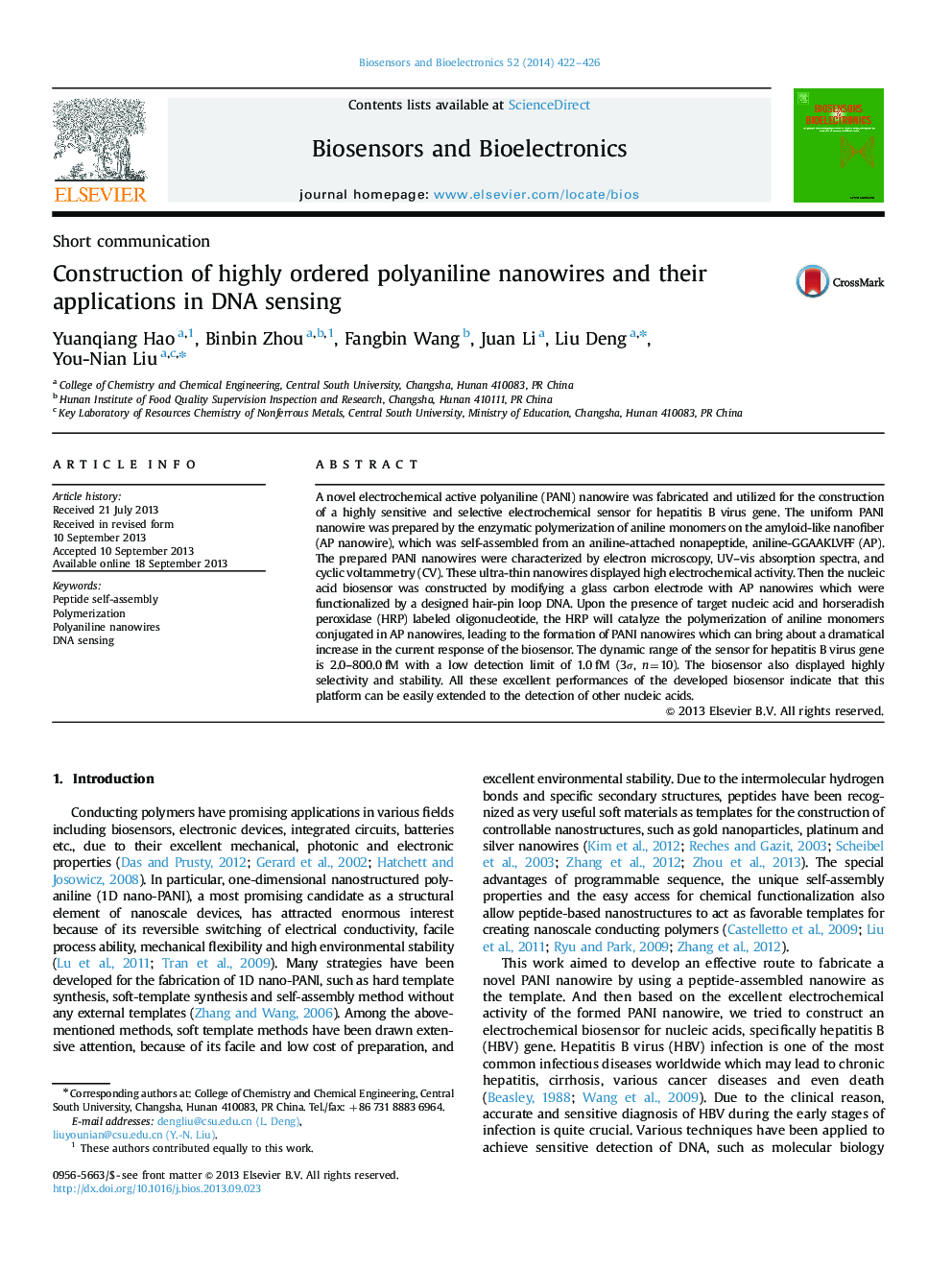| Article ID | Journal | Published Year | Pages | File Type |
|---|---|---|---|---|
| 866813 | Biosensors and Bioelectronics | 2014 | 5 Pages |
•Uniform polyaniline (PANI) nanowire was prepared by using peptide assembled fibers as the template.•A novel electrochemical biosensor was constructed based on the high electrochemical activity of the PANI nanowire.•The biosensor displayed high sensitivity and selectivity for hepatitis B virus gene.
A novel electrochemical active polyaniline (PANI) nanowire was fabricated and utilized for the construction of a highly sensitive and selective electrochemical sensor for hepatitis B virus gene. The uniform PANI nanowire was prepared by the enzymatic polymerization of aniline monomers on the amyloid-like nanofiber (AP nanowire), which was self-assembled from an aniline-attached nonapeptide, aniline-GGAAKLVFF (AP). The prepared PANI nanowires were characterized by electron microscopy, UV–vis absorption spectra, and cyclic voltammetry (CV). These ultra-thin nanowires displayed high electrochemical activity. Then the nucleic acid biosensor was constructed by modifying a glass carbon electrode with AP nanowires which were functionalized by a designed hair-pin loop DNA. Upon the presence of target nucleic acid and horseradish peroxidase (HRP) labeled oligonucleotide, the HRP will catalyze the polymerization of aniline monomers conjugated in AP nanowires, leading to the formation of PANI nanowires which can bring about a dramatical increase in the current response of the biosensor. The dynamic range of the sensor for hepatitis B virus gene is 2.0–800.0 fM with a low detection limit of 1.0 fM (3σ, n=10). The biosensor also displayed highly selectivity and stability. All these excellent performances of the developed biosensor indicate that this platform can be easily extended to the detection of other nucleic acids.
Graphical abstractFigure optionsDownload full-size imageDownload as PowerPoint slide
